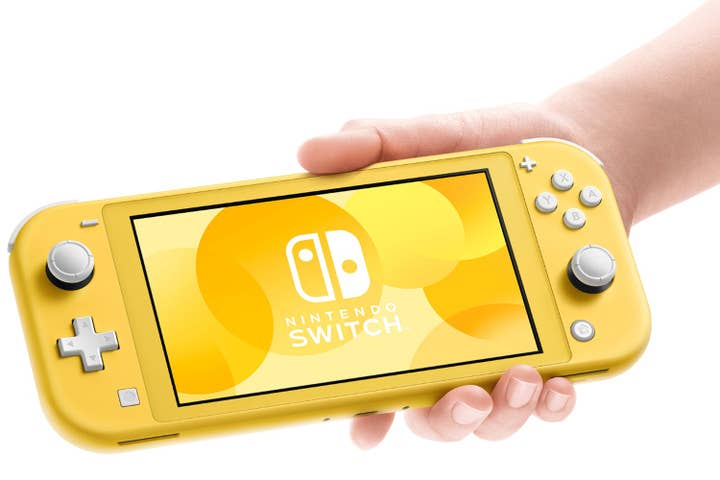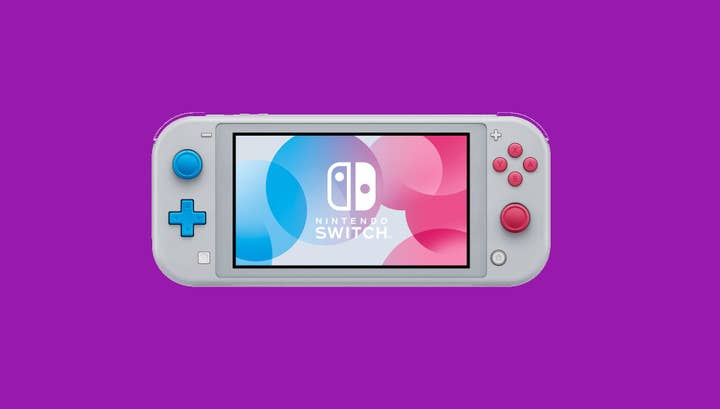Switch Lite takes aim at a broader demographic | Opinion
Nintendo's latest hardware update takes a leaf from the 2DS and Wii Lite -- pruning features and an aggressive price aimed at reaching new markets
Over the past couple of decades we've become very accustomed to the notion of consoles getting their hardware redesigned mid-lifespan -- so much so that it's now almost taken for granted that these milestones will punctuate the life of any moderately successful piece of hardware.
The earliest example that really stuck in people's minds is probably Sony's "PSone", a diminutive re-imagining of the groundbreaking PlayStation that came late in that device's life. But both the PlayStation 2 and PlayStation S3 benefited hugely from being slimmed down in their mid-life (honestly, who among us wouldn't?), and the Xbox 360's coveted Elite redesign helped to establish the design language for Xbox that persists to this day.
Microsoft and Sony seem to have this down pat, in other words. Nintendo's track record is more... patchy. The Wii Mini, launched back in 2012, is largely a footnote in gaming history; the industrial design was lovely, but the system hacked out vast amounts of the Wii's functionality and came far too late in its lifespan to really make a mark, despite an incredibly ambitious $100 price that was designed to open up the console to an even broader demographic.
"The launch numbers are about as good as you'd expect for a hardware redesign unaccompanied by any major software launch"
Nintendo's handheld redesigns have far better pedigree. The Game Boy Advance, notably, was dramatically reinvented several times in its lifespan, while the original DS' ugly duckling quickly evolved into the DS Lite's beautiful swan. The 3DS, meanwhile, had one of the most curious revisions of all in the form of the 2DS, a version of the system that stripped out two of the console's most distinctive features -- the 3D display and the DS-style hinged clam-shell -- and yet managed to create a system that found a pretty solid market, especially among parents buying for younger children.
So we arrive at Nintendo's latest effort, the Switch Lite. The arrival of the redesigned console has been met with a slightly confused reception in commercial terms, with a very solid first-week sales number in Japan -- in the region of 130,000, which notably seemed to be additive to, rather than cannibalising, the sales of the main Switch model -- being undermined by a widely reported but frankly barmy forecast from Citibank, which had seemingly forecast 300,000 sales. It's unlikely that Nintendo even manufactured anywhere near that number for the Japanese launch.
This caused a bit of a slide in Nintendo's share price, albeit a minor waver at the top of what's been a few solid months for the stock, and set the tone for coverage of Switch Lite's launch elsewhere -- much of which seems to have adopted a slightly unwarranted "launch numbers disappoint" tone. In reality, the launch numbers are about as good as you'd expect for a hardware redesign unaccompanied by any major software launch. Nintendo, no stranger to massive problems with its stock channels, has wisely opted in this case to keep the Switch Lite well away from any major software launches, in the hope that hardware supply will be settled by the time something like Pokémon comes along.
"Nintendo now seems to have figured out to be both first and second console for many consumers"
(In fact, Nintendo's single biggest software launch in this period is, er, Mario Kart on smartphones -- perhaps a total coincidence, but it certainly seems like a set of timings designed to avoid any repeats of past issues with hardware supply.)
If the commercial picture is a little confused, the critical response is not. Reviews of the Switch Lite are almost unanimously positive, which is quite interesting -- and promising -- given that this is no ordinary mid-lifecycle update. Switch Lite is in many ways a call back to the strategy that gave us the 2DS; it's not an attempt to simply shoehorn the existing console into a smaller package, but rather represents a fairly no-holds-barred reappraisal of the system's functionality.
Just as the 2DS removed the headline 3D feature of its predecessor, so the Switch Lite has effectively removed the ability to, well, switch. It can no longer be docked to a TV and the controllers can no longer be pulled from its sides and used in different configurations. In essence, the new system is now a pure-play handheld console --lighter, longer-lasting and no doubt far tougher, especially in the rough hands of small children, seasoned engines of chaos and destruction that they are.

Could the Switch have built up enough momentum to get to its current market position if it had launched as such a pure-handheld proposition? Almost certainly not -- and indeed, the dockable, "Switchable" version will still remain the "prime" version of the system -- but the demand for a version of Switch that is a more effective handheld system remains clear. Indeed, Nintendo, a company that has for so long excelled in the unusual niche of manufacturing everyone's second console -- the system you get once you already have a PlayStation or an Xbox -- now seems to have figured out to be both first and second console for many consumers, if the extent of the musing over whether to get a Switch Lite for travel to complement the existing Switch at home is to be believed.
"2019, especially the back half, is going to be one of the best years Nintendo has ever had from a commercial standpoint"
It's not just the 2DS that the Switch Lite brings to mind, though. The much-maligned and unloved Wii Lite is also a point of reference here. Wii Lite wasn't a bad idea; it took the most used features of the Wii, put them into a smaller package and sold it at a very cheap price-point in the hope of appealing to consumers who were interested in this trendy, much-discussed device but put off by the cost of entry. The real problem with Wii Lite, in retrospect, was timing; by the time the device arrived, the shiny halo around the Wii had already long since faded. Consumer interest had moved on.
Switch Lite is repeating that strategy but not that mistake. Switch is a much-discussed and very popular piece of hardware that attracts tons of attention; its star remains in the ascendant, so here comes Switch Lite at a price point that -- while not quite the $100 that Wii Lite achieved -- is still pretty aggressive, with its $200 mark coming in a good $100 cheaper than the basic edition of the far, far longer-in-the-tooth PS4.
Switch is of course a less powerful system than its market rivals, but it's in the same ballpark as far as most consumers are concerned, and it's a handheld, which comes with different expectations. Reports this week even suggested that Nintendo actually tried to shave even more off the price, putting even more clear water between its value proposition and that offered by Sony and Microsoft.
Of course, both of those firms are very focused on their upcoming hardware launches in 2020 by this point -- but Nintendo's strategy here should serve as a shot across their bows nonetheless, especially for Sony. PS4 is at a point in its lifespan where it should be making hay among younger audiences and casual gamers. For some reason, though, the console remains at a fairly high price point for a device so late in its life. Nintendo's undercutting is clearly designed to sweep up those audiences, and it's got a pretty amazing proposition for them overall -- especially since the handheld format has always been a very attractive one for less deeply engaged game consumers, as well as for families.
It's worth bearing in mind, too, that this isn't a one-and-done move from Nintendo. If this aggressive approach to hardware pricing bears fruit then it is likely to be an ongoing strategy, with the company being relatively quick to push down its retail pricing when economies of scale kick in on the hardware. Nintendo has never been a firm willing to actually take losses on hardware, and I wouldn't expect that to change. As such, we shouldn't expect further cuts in the immediate future, but it's unlikely that Switch will hold its price point for years in the way Sony and Microsoft have done with their consoles in this generation. Nintendo has some leeway here thanks to the high tie ratio of its first-party titles, of course; your capacity to discount the razors rises hand in hand with your skill at selling razorblades.
We now find ourselves approaching a Christmas season when Nintendo is going to have a console that is both the newest hardware on the market and the cheapest hardware on the market -- and a major new Pokémon game to boot. With new hardware looming in 2020 the landscape will change once again, but it seems pretty clear right now that 2019, especially the back half, is going to be one of the best years Nintendo has ever had from a commercial standpoint. How it will maintain that success in the face of building hype for a new generation of systems next year is the single biggest question on the horizon for the firm.

